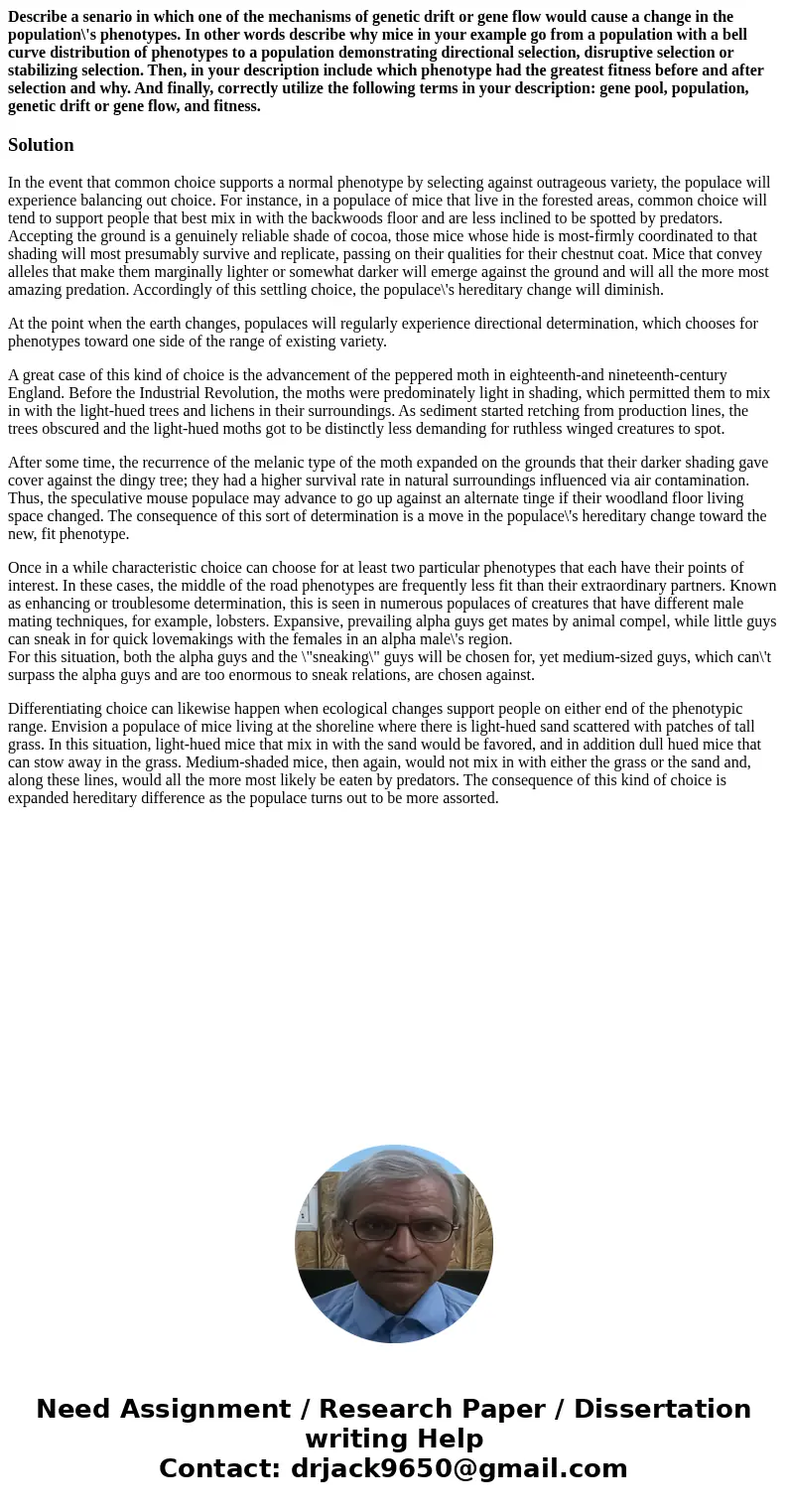Describe a senario in which one of the mechanisms of genetic
Describe a senario in which one of the mechanisms of genetic drift or gene flow would cause a change in the population\'s phenotypes. In other words describe why mice in your example go from a population with a bell curve distribution of phenotypes to a population demonstrating directional selection, disruptive selection or stabilizing selection. Then, in your description include which phenotype had the greatest fitness before and after selection and why. And finally, correctly utilize the following terms in your description: gene pool, population, genetic drift or gene flow, and fitness.
Solution
In the event that common choice supports a normal phenotype by selecting against outrageous variety, the populace will experience balancing out choice. For instance, in a populace of mice that live in the forested areas, common choice will tend to support people that best mix in with the backwoods floor and are less inclined to be spotted by predators.
Accepting the ground is a genuinely reliable shade of cocoa, those mice whose hide is most-firmly coordinated to that shading will most presumably survive and replicate, passing on their qualities for their chestnut coat. Mice that convey alleles that make them marginally lighter or somewhat darker will emerge against the ground and will all the more most amazing predation. Accordingly of this settling choice, the populace\'s hereditary change will diminish.
At the point when the earth changes, populaces will regularly experience directional determination, which chooses for phenotypes toward one side of the range of existing variety.
A great case of this kind of choice is the advancement of the peppered moth in eighteenth-and nineteenth-century England. Before the Industrial Revolution, the moths were predominately light in shading, which permitted them to mix in with the light-hued trees and lichens in their surroundings. As sediment started retching from production lines, the trees obscured and the light-hued moths got to be distinctly less demanding for ruthless winged creatures to spot.
After some time, the recurrence of the melanic type of the moth expanded on the grounds that their darker shading gave cover against the dingy tree; they had a higher survival rate in natural surroundings influenced via air contamination. Thus, the speculative mouse populace may advance to go up against an alternate tinge if their woodland floor living space changed. The consequence of this sort of determination is a move in the populace\'s hereditary change toward the new, fit phenotype.
Once in a while characteristic choice can choose for at least two particular phenotypes that each have their points of interest. In these cases, the middle of the road phenotypes are frequently less fit than their extraordinary partners. Known as enhancing or troublesome determination, this is seen in numerous populaces of creatures that have different male mating techniques, for example, lobsters. Expansive, prevailing alpha guys get mates by animal compel, while little guys can sneak in for quick lovemakings with the females in an alpha male\'s region.
For this situation, both the alpha guys and the \"sneaking\" guys will be chosen for, yet medium-sized guys, which can\'t surpass the alpha guys and are too enormous to sneak relations, are chosen against.
Differentiating choice can likewise happen when ecological changes support people on either end of the phenotypic range. Envision a populace of mice living at the shoreline where there is light-hued sand scattered with patches of tall grass. In this situation, light-hued mice that mix in with the sand would be favored, and in addition dull hued mice that can stow away in the grass. Medium-shaded mice, then again, would not mix in with either the grass or the sand and, along these lines, would all the more most likely be eaten by predators. The consequence of this kind of choice is expanded hereditary difference as the populace turns out to be more assorted.

 Homework Sourse
Homework Sourse